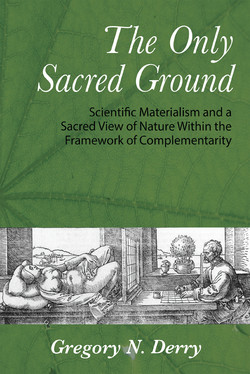Читать книгу The Only Sacred Ground - Gregory N. Derry - Страница 5
ОглавлениеPreface
This book is an extended reflection on our ideas about nature, written by a scientist, sympathetic to and informed by science, but very definitely not a scientific treatise. The approach adopted here is a transdisciplinary approach that draws on and respects a host of disciplines (philosophy, history, biology, theology, cultural studies, religious studies, and my own field of physics, among others) in an integrative manner. I do not pretend to have genuine mastery of all these areas, but I think it’s important for some people to make the attempt at transdisciplinarity lest the increasing fragmentation of our knowledge, our culture, and our personhood becomes oppressive. I apologize for any mistakes or oversimplifications I may have made, but I don’t apologize for making the attempt to integrate a large amount of material from a wide array of disciplines into a coherent synthesis.
Although I became quite interested in the literature on science/religion relationships while writing this, and although I consider the present work to be a contribution to that literature, this book is not a generic book on science and religion. Instead, it is a more detailed look at a very specific idea (complementarity) and how this idea contributes to the solution of a specific problem (the tension between a sacred apprehension of nature and scientific materialism). The major original idea presented here, the heart of the argument, is found in chapter 8. The material preceding chapter 8 is mainly to provide sufficient context to make that chapter intelligible. The material following chapter 8 is mainly to deepen and illustrate the potential applications of the idea to various specific problems.
Here at the outset I would like to clear up two possible misconceptions. The first possible misconception is that I am somehow trying to apply quantum mechanics to religious questions. Although it is true that complementarity has its roots in quantum mechanical issues, the argument I am making here is an epistemological argument that does not employ quantum theory per se. The second possible misconception is that I am trying to devise some sort of grand system that will explain everything about nature. My goal is both more modest than this and also more practical: I am attempting to provide an additional methodological tool to analyze and think about the relevant issues.
I started this project more than eight years ago, during a sabbatical year. The project began on a surreal note, as I was sitting outside reading about Niels Bohr’s philosophy and the seventeen-year cicadas started to emerge from the ground. Before the year ended, I was locked in a battle with a stage-three lymphoma, which I ultimately survived. Writing the book has lead to a number of other interests and to my encounters with a host of interesting thinkers. The present publication of the book is a gratifying end to a long journey, and I’d like to thank Apprentice House for their decision to publish it.
I also have a number of other debts to acknowledge. First, I would like to thank the John Templeton Foundation for a grant to work on the book during my sabbatical. I would also like to thank my institution, Loyola University Maryland, for providing the sabbatical year and supporting my work. Although I have had many stimulating conversations about this work with many different people, I would particularly like to single out Nicholas von Stillfried and Kris Jargocki in this respect. I’d also especially like to thank K. Helmut Reich for a thorough reading of the entire manuscript and a huge number of constructively critical comments. Closer to home, this work has benefited immeasurably from my intellectual interactions with my wife, Paula Derry, my daughter, Rebecca Derry, and my friends Daniel Perrine, Richard Blum, and Lisa Blum. And although I have never met or talked to Jan Faye or Henry Folse, I owe both of them a great deal for their excellent Bohr scholarship, which I have exploited extensively here. Lastly, I would like to thank Tracy Grammer for allowing me to use the fragment of song lyrics by the late poetic genius Dave Carter in the epigraph; these lines gave me the inspiration for the title of the book.
Although in some ways this is an entirely intellectual work (an exercise in logical analysis, as it were), on another level it has the deeper purpose of trying to create a space for spiritual realities in the modern world in a manner consistent with reason. My hope is that someone may find reading it to be useful in their own struggles to do this in their lives.
Baltimore
October 31, 2013
